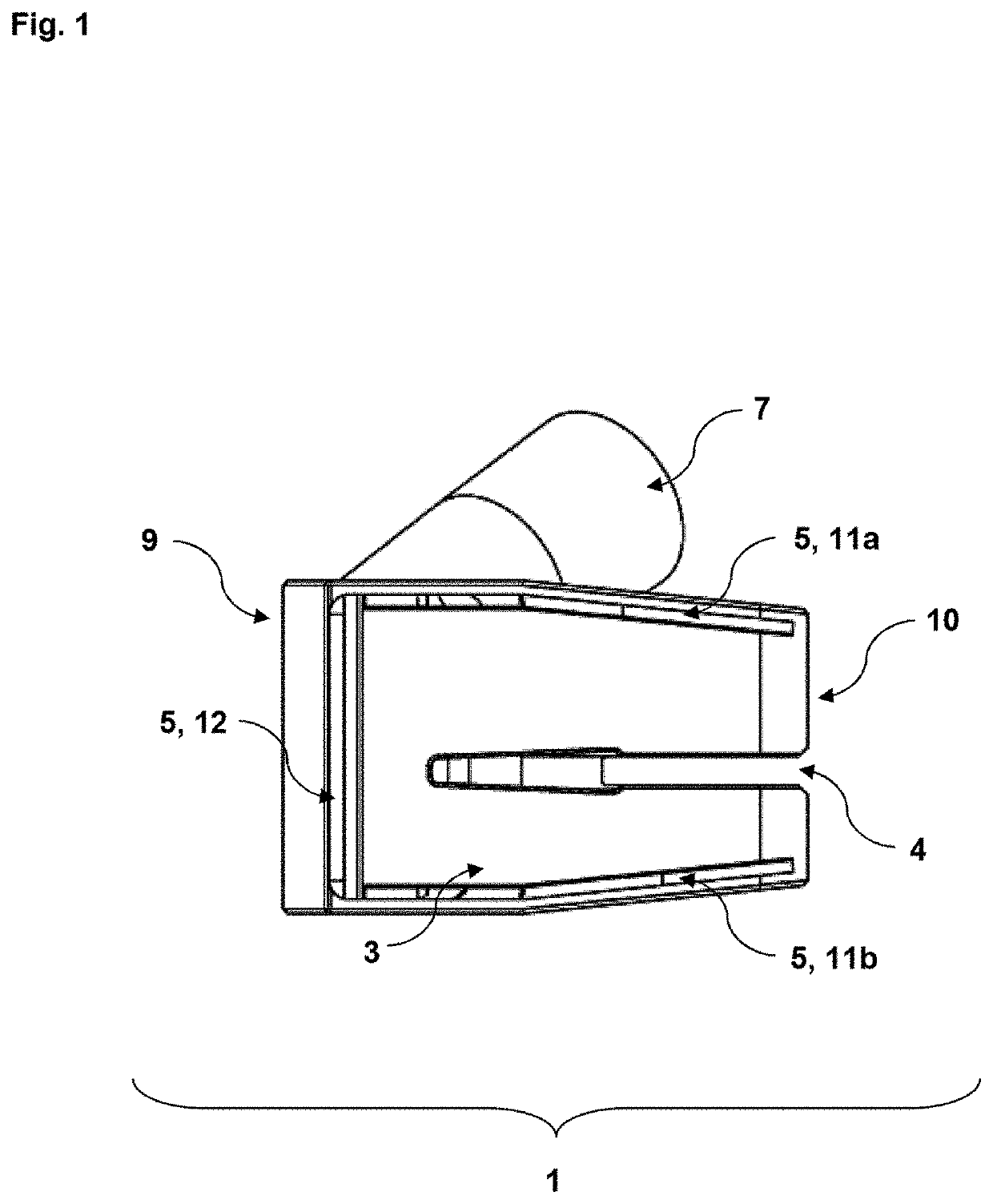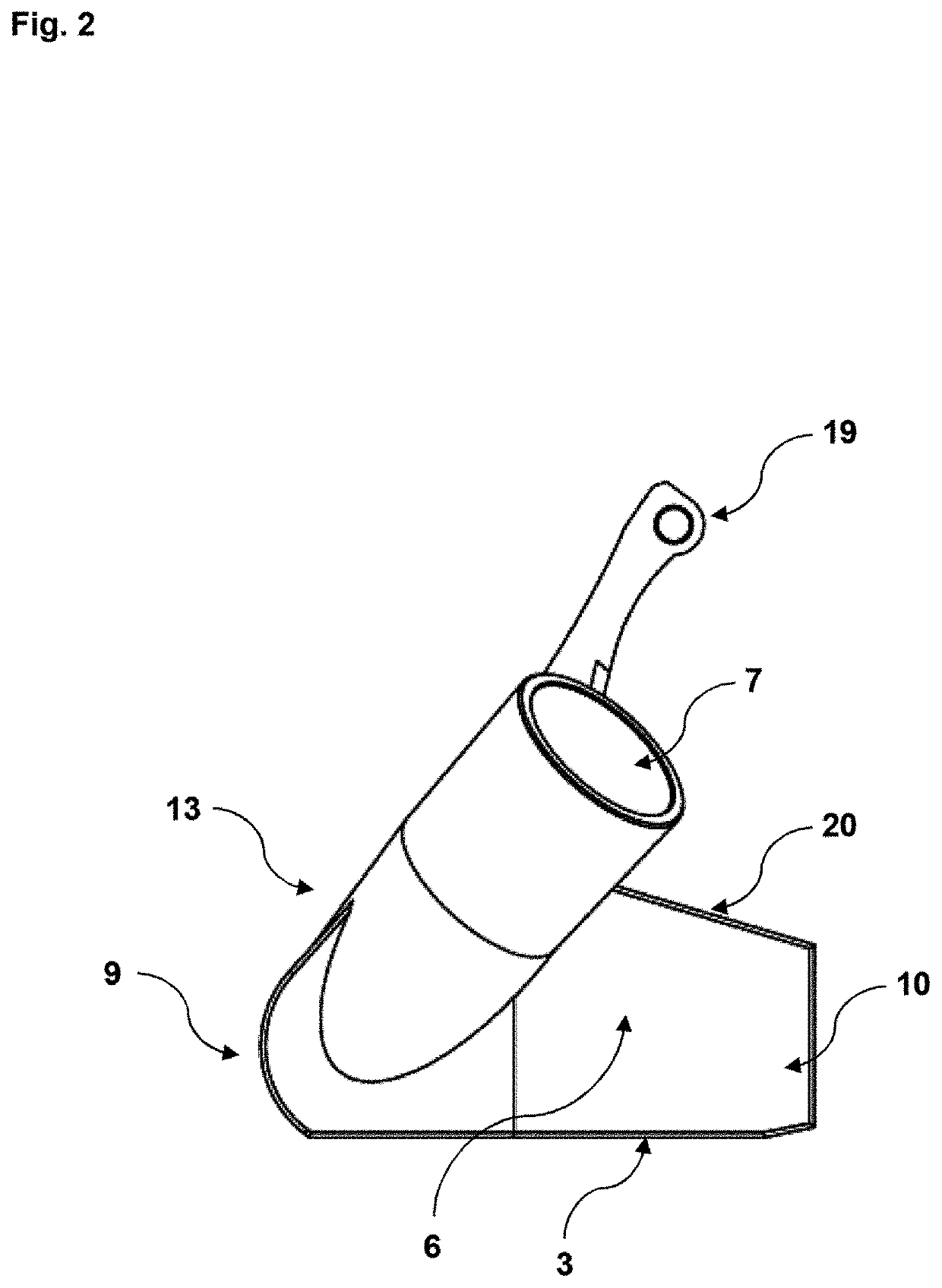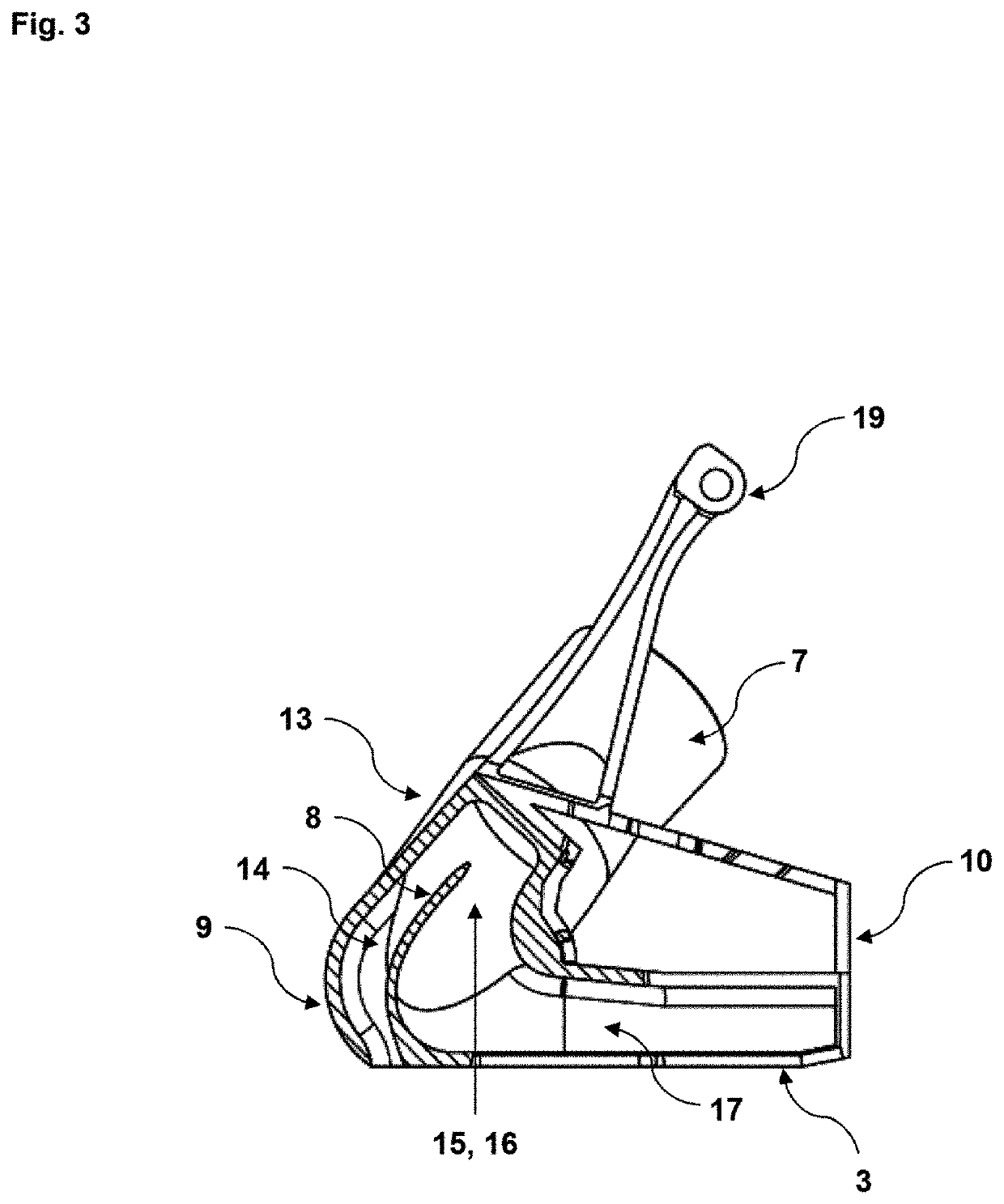Dust hood device for a power tool and the use thereof, and method for dust collection
- Summary
- Abstract
- Description
- Claims
- Application Information
AI Technical Summary
Benefits of technology
Problems solved by technology
Method used
Image
Examples
Embodiment Construction
[0062]FIG. 1 shows a lower side (3) of a preferred embodiment of the dust hood device (1). The power tool (2) on which the dust hood (1) can be secured is not illustrated in the figures. The dust hood device (1) has various openings (4, 5, 11a, 11b, 12) on the lower side (3) thereof. A first opening (4) is formed, for example, by a main channel, which serves at least in part as an insertion slot for the work-performing means (18) of the power tool (2). This insertion slot (4) is preferably open both in the full cutting mode and in the cutting-in mode of the power tool (2). On its lower side (3), the dust hood device (1) furthermore comprises a second opening (5), which can be formed by side channels (11a, 11b) and a front slotted opening (12). The slotted opening (5) preferably extends substantially parallel to a front edge of the dust hood device (1). For the purposes of the invention, it is preferred that the slotted opening (12) is present in a front region of the dust hood devic...
PUM
| Property | Measurement | Unit |
|---|---|---|
| Time | aaaaa | aaaaa |
Abstract
Description
Claims
Application Information
 Login to View More
Login to View More - R&D
- Intellectual Property
- Life Sciences
- Materials
- Tech Scout
- Unparalleled Data Quality
- Higher Quality Content
- 60% Fewer Hallucinations
Browse by: Latest US Patents, China's latest patents, Technical Efficacy Thesaurus, Application Domain, Technology Topic, Popular Technical Reports.
© 2025 PatSnap. All rights reserved.Legal|Privacy policy|Modern Slavery Act Transparency Statement|Sitemap|About US| Contact US: help@patsnap.com



